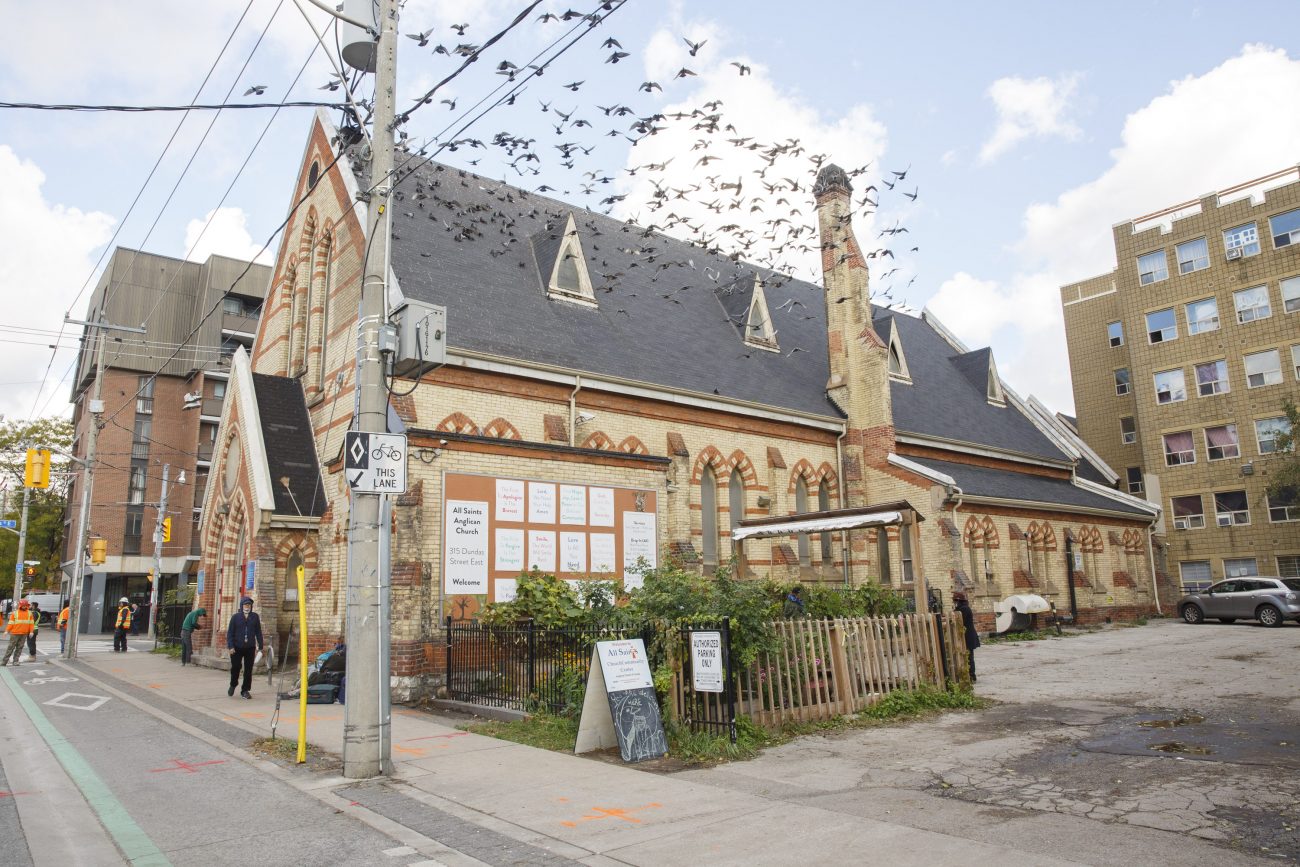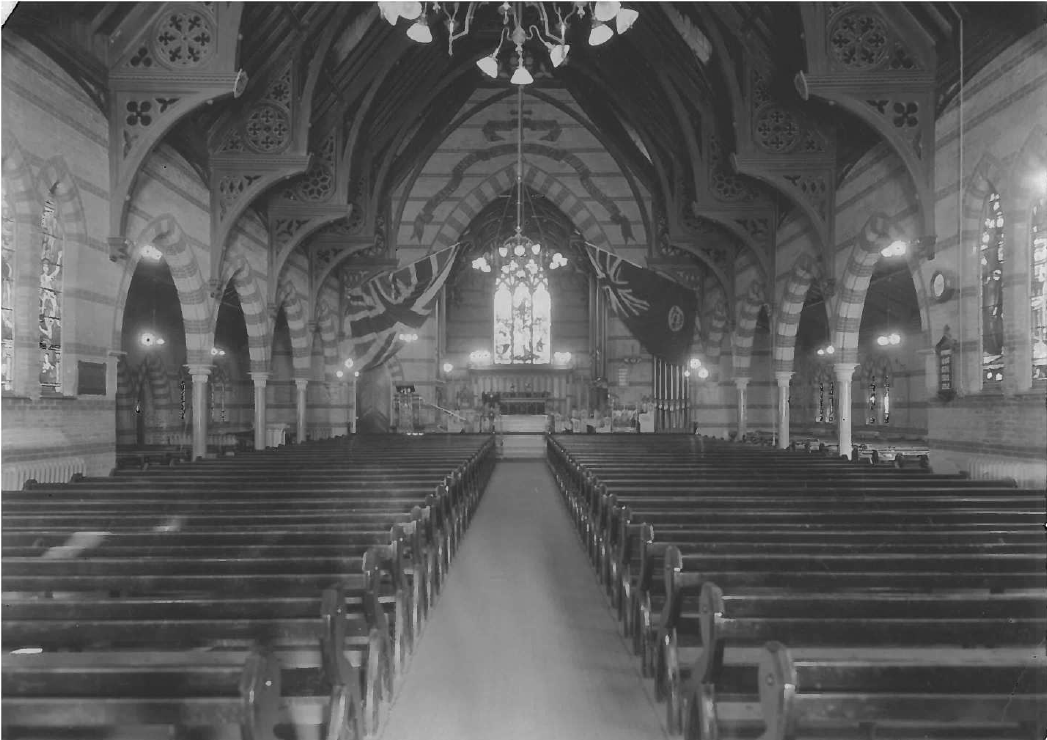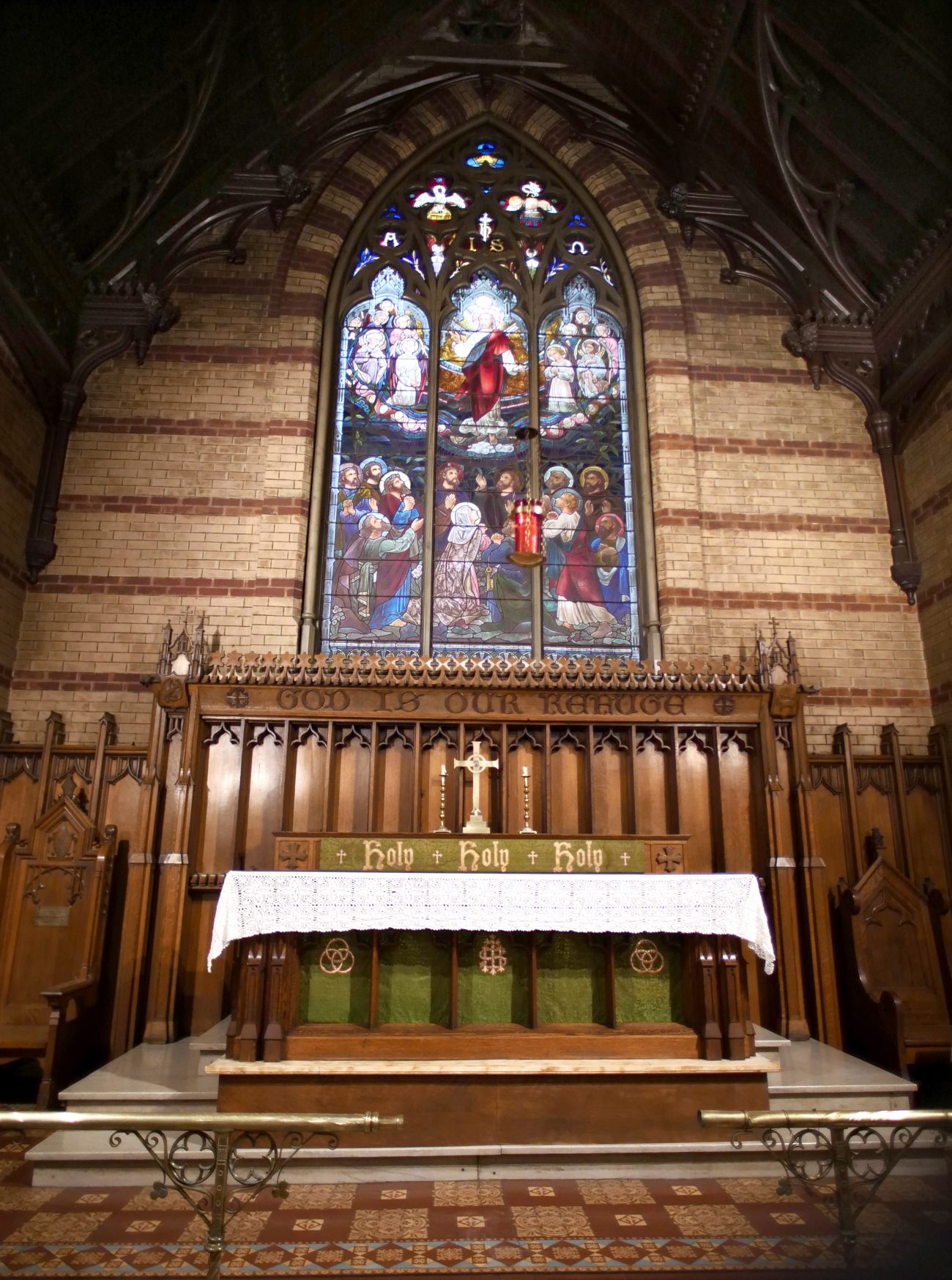By Corey Keeble, curator, Royal Ontario Museum, 2003
All Saints, the masterpiece of Richard C. Windeyer and John Falloon, is the outstanding example in Canada of High Victorian polychrome brickwork, an outgrowth of the Gothic Revival of the nineteenth century. It belongs in a period in architecture which emphasized texture, contrasts of colour and materials and picturesqueness in architecture. Every feature of All Saints reveals the influences of Britain’s Ecclesiological Society, the writings of John Ruskin, and the architectural oeuvre of William Butterfield, George Edmund Street, their contemporaries, followers, pupils and imitators.
All Saints is this nation’s perfect Gothic Revival realization of the synthesis of architecture and applied art advocated by Augustus Welby Northmore Pugin, William Morris, and the legitimate pioneers of the Modern Movement which succeeded the revival styles of the 1800s.
All Saints, Toronto, is the closest example we have in this country of a fusion of architecture and decorative art akin to Butterfield and Street’s designs [in England], and is directly related to them as a Canadian manifestation of an international movement.
If All Saints is the paramount example in Toronto of Victorian architectural polychromy, it is also the repository of an unbroken sequence of stained glass windows from Toronto’s McCausland studios, the Toronto film of Elliott & Son, and such English design firms as Cox & Buckley. All Saints possesses superb stencil glass of the 1870s — the best of its kind in Toronto. The chancel window, designed by McCausland at the beginning of the 1880s, was specifically intended as a Canadian challenge to the chancel glass in St. James’s Cathedral, Toronto, designed by the German firm of Mayer of Munich. The All Saints chancel window is in fact epoch making in the history of Canadian stained glass.
The north wall of the nave contains several McCausland windows of the early 1900s which are unique in terms of their quality, and their relation to paintings, etchings, and engravings by the foremost European artists of the late 1800s-early 1900s. Simply stated, they have no parallel as a sequenced set anywhere in Canada.
The west window is a classic example of the best McCausland work of the period around 1905-1914, and the term ‘best’ applies to virtually every detail of the entire structure.
All Saints is so important that it justifies virtually any expenditure in terms of restoration and preservation for future generations. This is a structure that must be preserved. It is too important to be lost to the city, the province and the nation.











